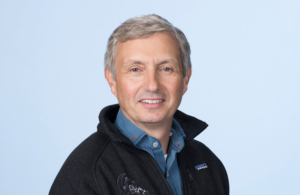The Provost Professor of Biological Sciences, Chemistry, Neurology, Physiology and Biophysics is elected a Fellow of the American Association for the Advancement of Science.
(Originally posted at USC Dornsife.)
By Darrin S. Joy
Raymond Stevens, Provost Professor of Biological Sciences, Chemistry, Neurology, Physiology and Biophysics, has been elected a Fellow of the American Association for the Advancement of Science.
Stevens, who holds joint appointments at USC Dornsife College of Letters, Arts and Sciences and Keck School of Medicine of USC, joins just 489 AAAS members elevated to the esteemed status of fellow from the millions of individuals the society serves globally.
“The AAAS fellows election comes with an increased responsibility to help make the world a better place, something that I take very seriously,” he said.
Stevens has consistently demonstrated his commitment to that ethic. The co-director of the Bridge Institute at the USC Michelson Center for Convergent Bioscience is a globally renowned structural biologist whose studies have resulted in several therapeutic molecules to treat conditions ranging from influenza and diabetes to rare childhood diseases and neuromuscular disorders.
His research focuses in large part on structure-based drug discovery and G-protein coupled receptors, a major class of proteins that are often associated with disease, and on converting biologics — complex medicines produced using living cells — to small molecule medicines, which are more easily produced, making them more available globally to those in need.
Stevens earned his Ph.D. in organic chemistry from USC Dornsife in 1988, and since joining the faculty in 2014, he has led efforts to bring scientists together with scholars from disparate disciplines, including the humanities and arts, to find answers to intractable problems in science and disease. Perhaps chief among those is a monumental effort aimed at creating the first comprehensive model of a pancreatic beta cell, which is key to the development of diabetes.
The project gathers biologists, chemists, computational biologists, engineers, mathematicians and imaging scientist as well as artists and filmmakers.
“We are converging to solve a difficult problem to solve a structure at multiple scales, from the individual atoms, to the small molecules, to the macromolecule, to the cell,” said Stevens in a 2018 interview, adding that the project would lead the way to similar projects with other cell types, such as neurons and stem cells.
Stevens also emphasizes the importance of improving public access to and understanding of science, an important consideration in electing AAAS Fellows.
“As scientists in today’s world, beyond maintaining high quality standards in research, we need to continually improve communication of science to the general public, constructively inform public policy discussions and decisions, and ensure that national borders do not become barriers to biomedical research by encouraging global collaboration,” he said.
In addition to his AAAS membership, Stevens is a member of the American Chemical Society, the American Crystallographic Association and the Society for Neuroscience. He has published more than 425 peer-reviewed scientific papers and, as of last week, he has been named among the world’s most highly cited researchers by Clarivate for seven consecutive years. He has started more than five biotechnology companies and four National Institutes of Health centers of excellence, and he has helped advance five new medicines to the market to treat a number of different diseases affecting society, ranging from rare childhood diseases, such as phenylketonuria, to multiple sclerosis.
